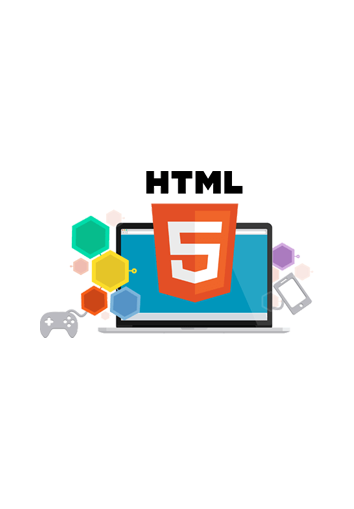Aoteng Insights
Your go-to source for the latest trends and insights.
HTML5 Development: Where Code Meets Creativity
Discover the magic of HTML5 development—where code transforms into creativity. Unleash your coding potential and elevate your projects today!
Exploring the New Features of HTML5: A Developer's Guide
HTML5 has brought a myriad of new features that significantly enhance the capabilities of web development. One of the most notable additions is the semantic elements, such as <article>, <section>, and <nav>. These elements not only improve the structure of web pages but also aid search engines in better understanding the context of the content. In addition, AUDIO and VIDEO tags provide native support for multimedia, eliminating the need for third-party plugins, thereby enhancing user experience and accessibility.
Another exciting feature of HTML5 is the Canvas element, which allows for dynamic, scriptable rendering of 2D shapes and bitmap images. This opens up a realm of possibilities for developers, enabling the creation of visually striking graphics and animations directly within the web browser. Furthermore, HTML5 introduces Geolocation API, allowing web applications to access the geographical location of a user, fostering more personalized experiences. As developers explore these new features, it's essential to consider their implications for SEO, ensuring that web pages not only leverage these advancements but also remain optimized for search engine visibility.

Top 10 Creative Projects You Can Build with HTML5
HTML5 is a powerful tool that can bring creativity to life on the web. Here are the Top 10 Creative Projects You Can Build with HTML5 that will not only enhance your coding skills but also provide an engaging experience for users. Whether you are a beginner or an experienced developer, these projects can help you explore the potential of HTML5:
- Interactive Games: Create simple games using the Canvas API to design graphics and animations.
- Responsive Web Applications: Utilize CSS3 in conjunction with HTML5 to build applications that adapt to any device.
- Online Portfolios: Showcase your work with visually appealing layouts and multimedia elements.
- Music Players: Build a custom audio player that integrates with HTML5 audio features.
- Real-Time Data Visualizations: Use the SVG capabilities for dynamic data representation.
- Video Galleries: Create stunning video showcases that leverage HTML5 video support.
- Interactive Maps: Integrate Geolocation API to create location-based interactive maps.
- Educational Websites: Develop sites that utilize animated infographics and quizzes.
- Augmented Reality Apps: Merge real-world elements with digital content using HTML5.
- Chat Applications: Implement WebSocket for real-time communication.
How HTML5 Revolutionizes Web Design and User Experience
HTML5 has fundamentally transformed the landscape of web design by introducing a plethora of new features that enhance both functionality and usability. It offers native support for audio and video embedding, eliminating the need for third-party plugins and ensuring a smoother user experience. This shift not only streamlines the design process but also improves accessibility, making it easier for users to engage with multimedia content across various devices. Additionally, the semantic elements introduced in HTML5, such as <header>, <footer>, and <article>, promote better content organization and improve search engine optimization (SEO), which is essential for driving traffic to websites.
Moreover, HTML5 enhances user experience through its advanced capabilities, including offline storage and local database support. This means that users can interact with web applications without an internet connection, significantly enhancing performance and functionality. Web developers can also leverage features like the Canvas API for creating interactive graphics and animations, which beautify the user interface and engage visitors more effectively. With these innovations, HTML5 not only makes web design more efficient but also elevates the overall user experience, allowing designers to cater to the modern audience's expectations and preferences.